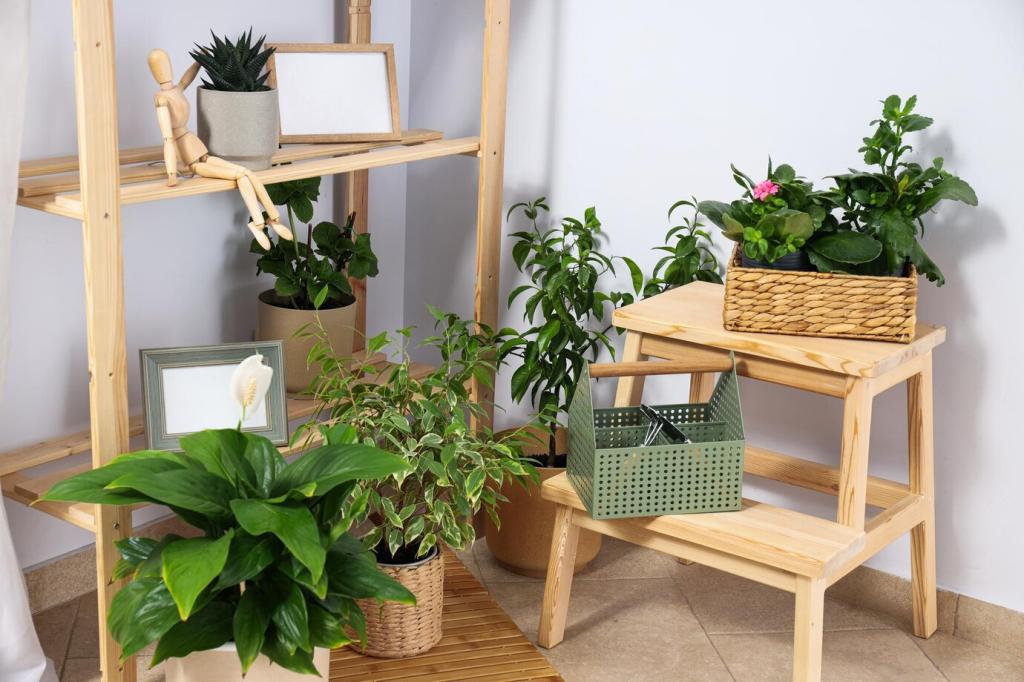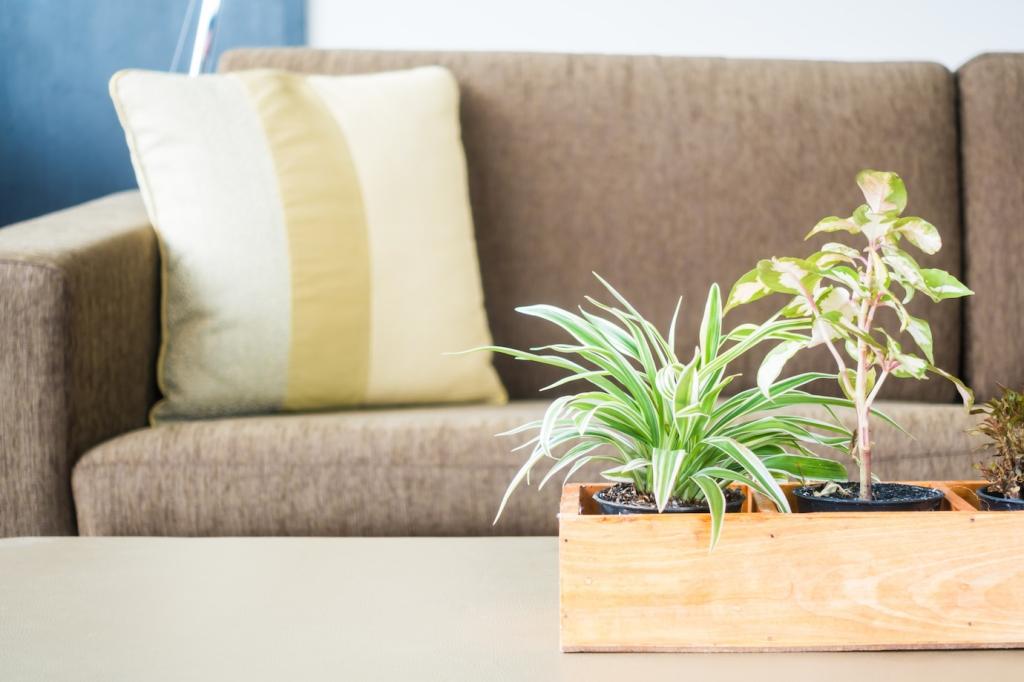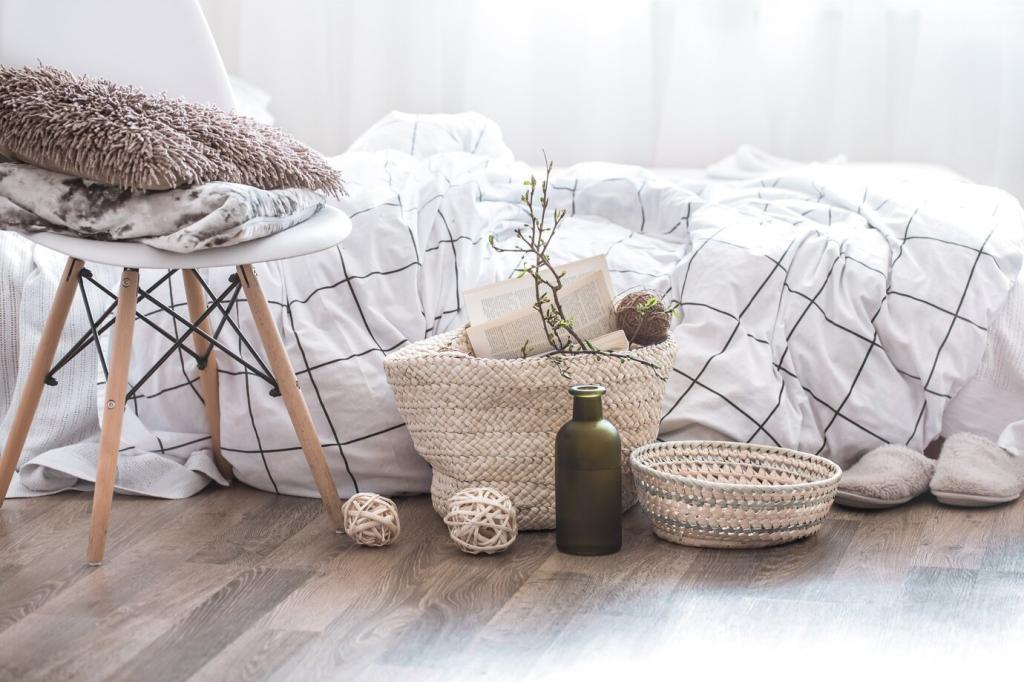Eco-Friendly Indoor Plants for Contemporary Homes
Discover how eco-friendly indoor plants can transform your modern living spaces, creating a harmonious blend of sustainability, beauty, and wellbeing. In this guide, explore diverse plant varieties, sustainability benefits, and styling tips to revitalize your contemporary home with vibrant greenery that treads lightly on the planet.

Previous
Next
Air Quality and Wellness Benefits
Natural Air Purification
Certain indoor plants possess remarkable abilities to filter airborne toxins commonly found in household products and furnishings. Through phytoremediation, they absorb pollutants like formaldehyde and benzene, releasing clean oxygen that’s vital for occupant health. This simple, natural process reduces reliance on mechanical air purifiers and fosters a refreshing, breathable atmosphere, essential for those spending extended time indoors.
Boosting Mood and Productivity
The presence of green plants has been extensively linked to enhanced mental health and cognitive function. Their calming visual appeal and touch of nature promote relaxation, reduce stress, and foster greater emotional balance. Studies further show that plants in workspaces or living areas can uplift mood, improve focus, and boost productivity, making them excellent companions for contemporary lifestyles centered on efficiency and wellness.
Supporting Restful Sleep
Some eco-friendly indoor plants are especially beneficial for promoting restful sleep and improved nighttime air quality. Varieties like the snake plant or peace lily release oxygen even during the night, supporting better breathing and a rejuvenating sleep cycle. Incorporating such plants into bedrooms or relaxation areas transforms them into tranquil sanctuaries, demonstrating how sustainability can directly benefit physical and emotional health.
Styling Plants in Contemporary Spaces
Focal Points and Statement Pieces
Large, architecturally striking plants serve as bold statement pieces in contemporary design schemes. Their height, shape, or unusual color draws attention and defines the spatial energy of a room. Placing a dramatic specimen in an entryway, living room, or next to panoramic windows creates a sense of grandeur while highlighting the homeowner’s commitment to sustainable décor.
Integrated Green Corners
Designating specific corners or niches for lush plant groupings provides cohesive visual interest within a contemporary layout. These green sanctuaries invite rest, reflection, or conversation, effectively breaking up monotony or harshness in open-plan spaces. By choosing harmonious varieties and stylish, natural containers, homeowners achieve a curated look that fosters both serenity and uniqueness.
Harmonizing with Modern Materials
Plants’ organic textures and hues contrast superbly with the clean lines and manufactured finishes typical in contemporary homes. Incorporating greenery against backgrounds of concrete, glass, or polished wood establishes a deliberate interplay of warmth and coolness. This careful juxtaposition elevates the overall design narrative while keeping spaces airy, uncluttered, and rooted in sustainable living.

Previous slide
Next slide

Recycled and Biodegradable Materials
Opting for planters crafted from recycled plastic, reclaimed wood, bamboo, or biodegradable composites makes a tangible environmental difference. Such materials lessen demand for new resources and accelerate responsible product lifecycles. They also provide a variety of textures and finishes that enhance the contemporary look of indoor spaces.
Upcycled and Handmade Designs
Repurposing containers—like vintage ceramics, glass jars, or old baskets—into unique planters fosters creativity and reduces landfill contributions. Handmade or artisanal pots often use sustainable processes and infuse homes with character and storytelling. Each container becomes a conversation piece that signals attention to environmental stewardship and personal style.

The Role of Plants in Biophilic Design
Indoor plants serve as daily reminders of the natural world, fostering a sense of connection often lost in urban or technologically driven environments. This connection supports emotional balance, creative thinking, and overall happiness. By integrating greenery into living areas, occupants continually experience nature’s presence, reinforcing a harmonious, rejuvenating home environment.
